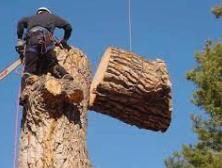Key Steps and Considerations in Borehole Installation

Are you a homeowner or renovator in South Africa looking to tap into a sustainable water source for your property? Well, look no further! Borehole installation could be the solution you've been searching for. In this comprehensive guide, we'll walk you through the key steps and considerations involved in the borehole installation process, from the initial site assessment to drilling and completion. Let's dive in!
Assessing Your Property: Finding the Perfect Spot for Your Borehole
Before drilling begins, it's crucial to assess your property to determine the optimal location for your borehole. Here are some key considerations:
- Geological Survey: Conduct a geological survey to assess the subsurface conditions of your property. This will help identify potential aquifers and ensure a successful borehole installation.
- Water Table Depth: Determine the depth of the water table on your property. Ideally, you'll want to drill into an aquifer with a high water table to ensure a sustainable supply of useable water.
- Accessibility: Consider the accessibility of the proposed borehole site for drilling equipment and future maintenance. A location with easy access will streamline the installation process and minimize costs.
- Regulatory Compliance: Familiarize yourself with local regulations and obtain any necessary permits for borehole installation. Compliance with regulatory requirements is essential to ensure the legality and safety of your borehole.
Once you've completed the site assessment and identified the perfect spot for your borehole, it's time to move on to the drilling phase.
Drilling Your Borehole: Turning Potential into Reality
Drilling a borehole is a complex process that requires specialized equipment and expertise. Here's what you can expect during the drilling phase:
- Choosing the Right Drilling Method: Select the appropriate drilling method based on the geological conditions of your property. Common drilling techniques include rotary drilling, percussion drilling, and auger drilling.
- Depth Determination: Determine the desired depth of your borehole based on factors such as water table depth and anticipated water usage. Deeper boreholes may require more extensive drilling equipment and incur higher costs.
- Drilling Operation: The drilling process begins with the insertion of the drilling rig into the designated borehole location. As drilling progresses, rock cuttings are brought to the surface, and casing may be installed to stabilize the borehole.
- Well Development: Once drilling is complete, the borehole undergoes a process called well development to remove drilling fluids and improve water flow. This typically involves techniques such as air surging, pumping, and chemical treatments.
- Completion and Installation: After successful well development, the borehole is completed with the installation of a pump and casing. The pump is connected to your property's water system, providing you with access to a reliable source of useable water.
Congratulations! You've successfully installed a borehole on your property, unlocking a sustainable water source for your home improvement projects.
In conclusion, borehole installation is a valuable investment for homeowners and renovators in South Africa seeking to reduce their dependence on municipal water supplies and harness the potential of their properties. By following the key steps and considerations outlined in this guide, you can embark on your borehole installation journey with confidence, knowing that you're making a positive impact on both your property and the environment. Happy drilling!
Quick Links
- Borehole Installation and Repairs in South Africa
- Borehole Installation and Repairs in Cape Town Metropolitan
- Borehole Installation and Repairs in Durban Central
- Borehole Installation and Repairs in Johannesburg
- Borehole Installation and Repairs in Port Elizabeth
- Borehole Installation and Repairs in Pretoria

